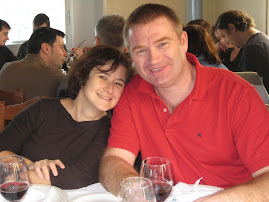
As told in the previous post, the wedding venue is going to be in a restaurant in Montjuic. Montjuic is a rocky hill overlooking Barcelona, specially the seafront, and one of the best viewpoints for the city (the other being probably Tibidabo hill on the north). If you go down Las Ramblas until Colon, you’ll see the hill emerging abruptly on the right. The name probably derives from “mount of the jews”, because in medieval times the Jewish cementery was located there. The oldest construction is the hilltop Castle, which has the dubious honor of having been used more for attacking the city, than for defending it. The castle ramparts are a good viewpoint, but apart from that, it’s quite ugly. The castle excepted, the hill was quite unused until the early XX century. Two dates mark the development of the hill: The 1929 International Exhibition, and the 1992 Olympics. From 1929 are Museu Nacional d’Art de Catalunya, the Magic Fountains, the Pueblo Español, and the layout of several gardens. From 1992 are the sport installations, and the development of even more gardens. So in the XX century, Montjuic went from a forest and bushy hill, into a place for sport complexes, museums and public parks. For instance El Xalet restaurant is located between the Miro Foundation Museum and the Olympic swimming pools.
 For those of you that are planning a nice holiday on the occasion of our wedding, Montjuic is worth a look. Apart from the view and a little relaxation in the gardens, the place is heaven for the culture vultures. Begin with Museu Nacional d’Art de Catalunya (MNAC), on the big mammoth pastiche building that presides Plaza de España. MNAC will appeal to the Medieval lovers, because it has the best collection in Europe of medieval frescoes.
For those of you that are planning a nice holiday on the occasion of our wedding, Montjuic is worth a look. Apart from the view and a little relaxation in the gardens, the place is heaven for the culture vultures. Begin with Museu Nacional d’Art de Catalunya (MNAC), on the big mammoth pastiche building that presides Plaza de España. MNAC will appeal to the Medieval lovers, because it has the best collection in Europe of medieval frescoes. On the other extreme, the Miro Foundation Museum, will appeal to the lovers of contemporary art, the Foundation also has a very good restaurant (that follows the Museum timetable).
For more eccentric tourism, you have the kitsch Pueblo Español. Built in 1929, it’s a pastiche “typical Spanish town”. . But it’s been rehabilitated, and now boasts also craftsman shops, exhibition halls, and restaurants.
And for the lovers of the so called “dark tourism”, the Cementery of Montjuich will be a must. And no, these are not very small apartments, even if the location is incredible good ….


No comments:
Post a Comment